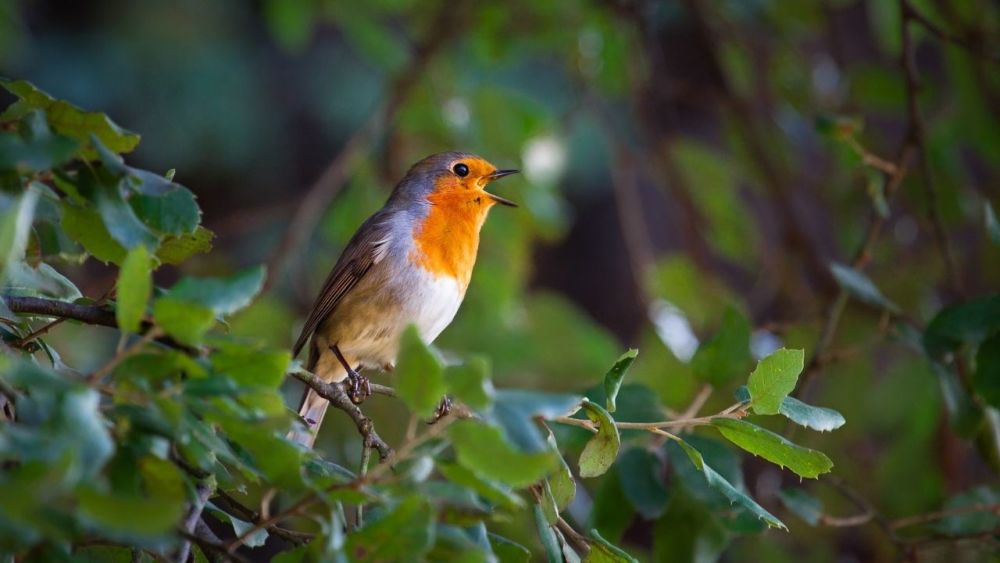
A guide to approaching bird language and how you can learn to understand birds yourself
👉 The key facts from this guide
- Learn the basics of bird language and understand how they communicate.
- Distinguish between songs and calls in birds and their functions.
- Explore the four types of calls: contact call, alarm call, territorial call, and begging call.
- Understand the concept of baseline and look for disruptions in bird communication.
- Practice regularly and listen for bird calls to sharpen your perception.
- Use resources like online databases, apps, and books to expand your knowledge.
You've always wanted to learn how to communicate with your feathered friends. It seems like such a magical ability, but where do you even start?
Birds are a great company and make your life more exciting. But how do you understand their communication?
The solution is simple. Start with this article.
He teaches you the basics of bird language and gives you practical tips to get started.
And the good thing is: you can learn bird language everywhere, whether in the city or in the forest, and you don't need any equipment for it.
Then explore other bird-related resources to get additional information on this fascinating topic.
For most people, birds simply sing
Indeed, studies indicate that natural sounds like bird songs have particularly relaxing effects on humans. (Check out here and here for sources on this)
But the songs and calls of birds are much more than just simple beautiful background noises.
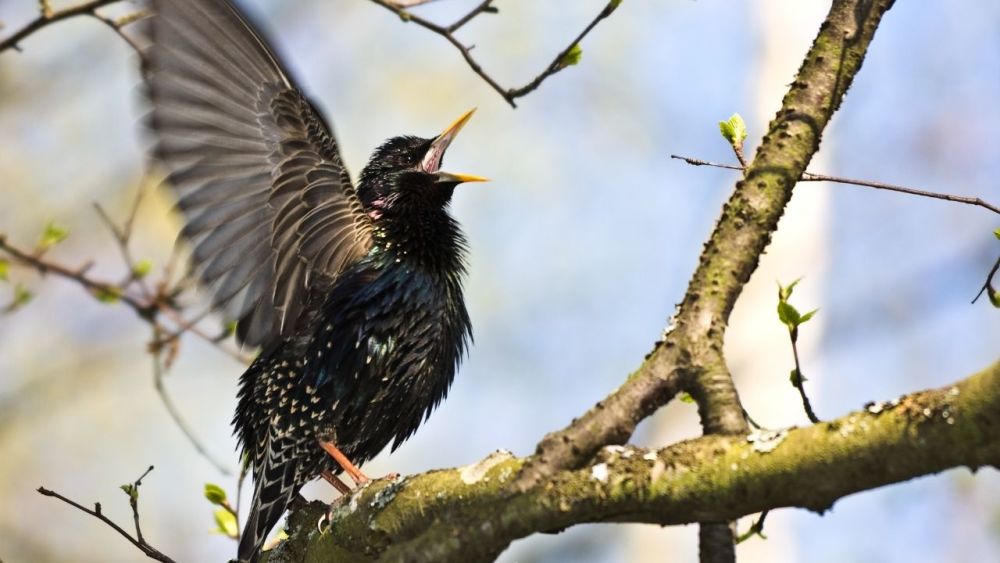
Bird calls can, for example, signal whether a wild animal such as a fox or a bear is nearby or whether a hawk is going hunting.
If you are interested in bird language, it will help you to discover more animals in the forest (or even in the city).
Generally, the language of birds helps you better understand what is happening in your surroundings.
Jon Young, bird expert and one of the founders of wilderness education, describes in his book "What the Robin knows" that the sounds of birds must serve a purpose. Because birds, like all animals in the wild, have to conserve their energy.
If they were to sing randomly and senselessly at the top of their lungs, they would waste too many resources and jeopardize their survival
But on the contrary, bird language helps the survival of birds by, among other things, warning each other of dangers.
Distinguishing between Bird Song and Call
The various calls and songs of birds are extremely complex and diverse.
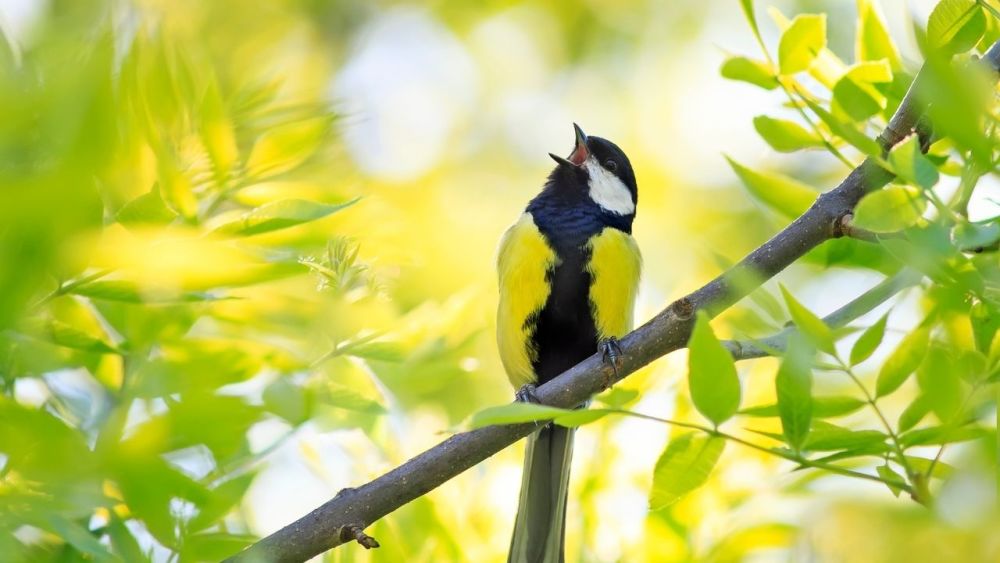
However, even for laypeople, a distinction into basic categories is quite simple and already helps to decipher the communication of the feathered folks in general.
First, we distinguish between call and song. The song usually consists of short melodies (e.g., blackbird) and rhythmic patterns (e.g., wood pigeon). In contrast, a call consists mostly of one or a few syllables and is less melodic. Examples where this difference becomes very clear are the blackbird and the robin.
The Song of Birds - Why do birds sing?
Why do birds sing? The singing of birds primarily serves two fundamental functions.
Firstly, birds use it to mark their territory boundaries, and secondly, bird song is an important part of courtship and mate selection.
For these reasons, it is often the male birds that are particularly frequent and loud to hear.
Based on the singing of the males, the females choose a partner. Accordingly, bird songs are mainly heard in spring.
In autumn, the mostly seasonal bird partnership is coming to an end and the food supply, and therefore the available energy, is becoming increasingly scarce.
Migratory birds are preparing for their long and arduous journeys. Because the birds are conserving their energy, no songs can be heard.
With regard to singing, an essential rule is that birds only sing when they are relaxed.
When you hear a bird singing, you know that it feels safe right now.
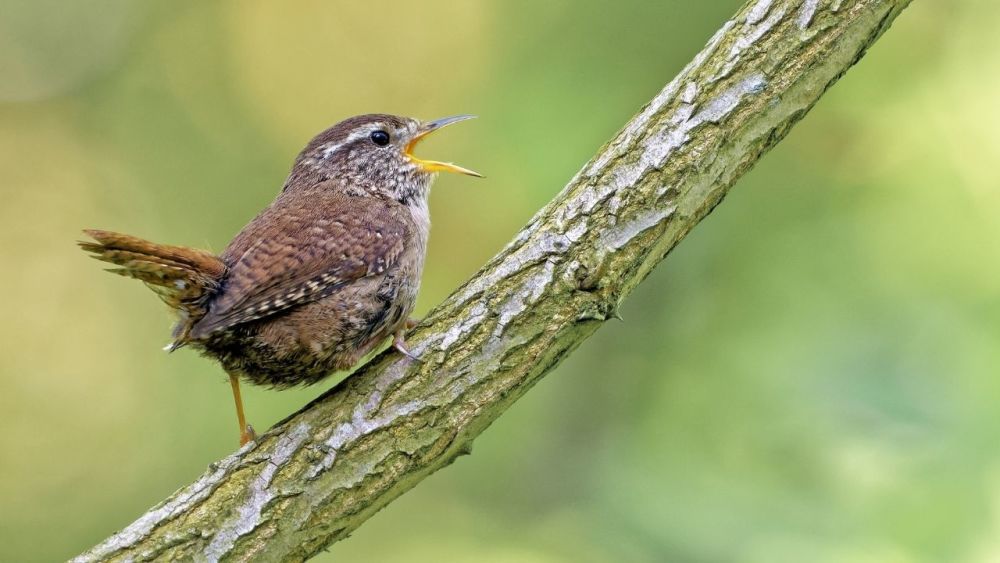
You can easily test this.
If you see a singing bird and approach it very slowly, it will eventually stop singing. It may also show nervous body language, such as wagging its tail feathers.
If you move away again or if the bird gets used to your presence after a while, it will continue to sing.
However, if you approach him quickly or get too close to him, he will immediately interrupt his singing and fly away.
He may still emit alarm calls. Depending on how accustomed the birds in your area are to humans, their behavior will be more cautious and relaxed.
Read also
33 Tips for More Connection with Nature - How to Strengthen Your Connection with Nature – You long for a stronger connection to nature? Here you can find 33 specific exercises and ideas, with which you can easily strengthen your connection to nature.
The four types of bird calls
Jon Young breaks down the calls of birds into four simple categories, which greatly help us classify the communication signals of birds.
- Contact call
- Alarm call
- Territorial call
- Begging call
Let's now take a closer look at these four calls to understand them.
1. Contact call
A bird specimen of a species communicates something to another specimen of its species like "I am here!".
Often you hear another bird responding to it.
This is a rather relaxed call, there is no danger. You can hear this regularly from tits in the park or in the forest, or also from hooded crows in the city. The latter typically call each other during their flights.
2. Alarm Call
A disturbance occurs, for example, a jogger, a dog, a cat, or a fox comes near.
The bird calls anxiously, warning the others. Typically, you can hear the alarm being passed on by other birds of different species. This is called a ground alarm.
The alarm calls of the blackbird and the robin can be heard particularly frequently and are therefore quite memorable.
To warn each other of dangers from the air, such as a hawk or sparrowhawk, birds emit an air alarm. This is a high, elongated sound that is difficult to perceive from the air.
An alarm might be followed by fleeing, which means escaping from danger, or a few seconds of silence to hide from danger.
3. Territorial Call
A territorial call sounds similar to an alarm call. Its function is to signal to another bird of the same species that it has crossed a territory boundary.
Unlike with the alarm call, no other birds will pass on the call. Based on this, you can distinguish whether you have heard a territorial call or an alarm call.
However, you can only be certain if you have also observed the crossing of the territory boundary and its acoustic defense.
4. Begging Call
Bird chicks in the nest beg for food. They often call very loudly. You can hear their chirpy voices in spring or early summer from nests or breeding cavities.
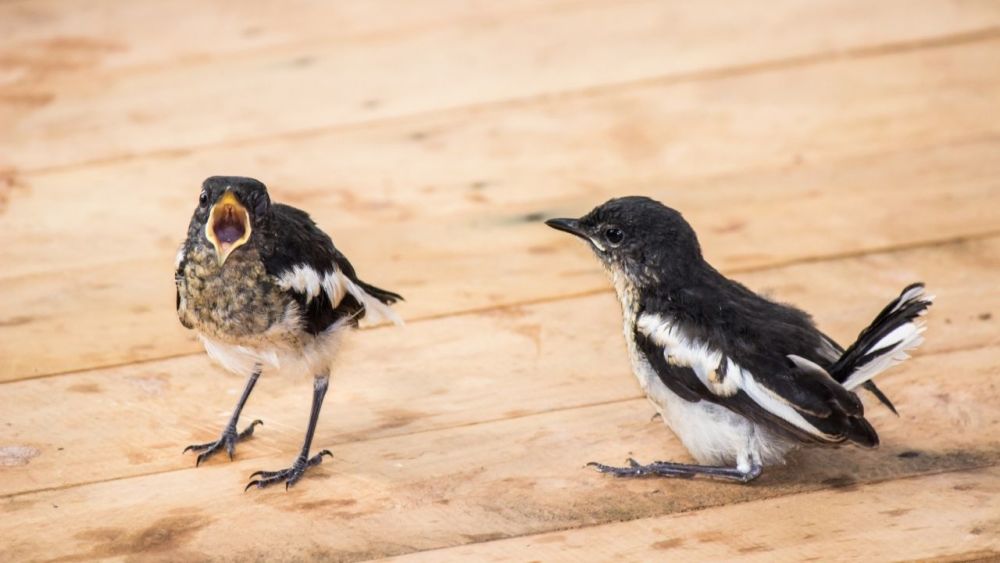
What is the baseline and what disruptions are there?
In addition to a basic understanding of songs and calls, the concept of baseline is also important for understanding bird communication.
The baseline is the usual acoustic backdrop at a location at a specific time.
In a mixed forest in April at sunrise, the baseline consists of a loud mixture of various bird songs. When young birds are in nests, begging calls are also part of the baseline.
A potential danger manifests itself in a disruption of the baseline, that is, in alarm calls or even in silence.
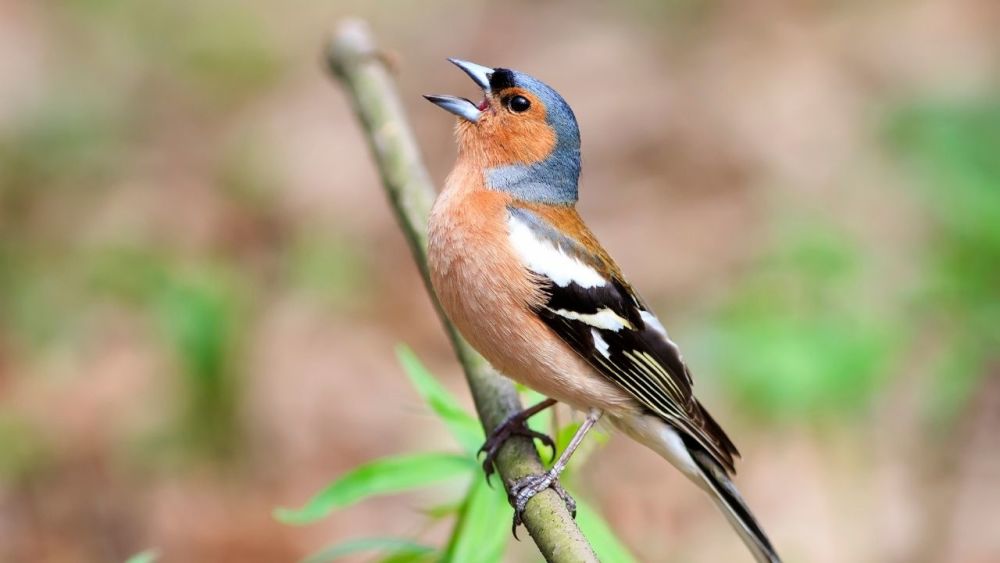
If suddenly everything is quiet, it's because the birds feel threatened. If you notice this, then look around carefully. Maybe there's a hawk nearby?
Even the noise of an approaching car can disrupt the baseline, for example, some alarm calls followed by several seconds of silence.
If you are in the forest, you might disturb the baseline yourself, especially if you move off the trails or stop to observe a singing bird.
On footpaths, pedestrians are usually accustomed to birds and probably do not even interrupt their singing in their presence.
But if you behave differently than ordinary walkers, it appears threatening to birds.
If you sit in the forest, it can take many minutes for the undisturbed baseline to return. In remote regions, it takes even longer.
Tips for learning bird language
- The essential method to learn bird language is a regular sitting spot. Only when you are still in one place for a while will you have the opportunity to perceive and interpret different situations of bird language.
- Do not be too hasty in interpreting the calls. Premature interpretations limit your perception. Stay flexible and realize that your interpretation could be wrong. What other interpretations are possible?
- Identify the baseline at your location and pay attention to disturbances such as alarm calls and silence. When there are disturbances, observe what could have caused them.
- When you are walking, constantly listen to the bird sounds. Where do you hear birds right now? Is it a song or a call? Is the bird sound relaxed, nervous, or excited? Over time, it will become a habit for you to pay attention to bird sounds. This relaxes and sharpens your perception at the same time.
- When you hear a call, pay attention to whether another bird responds to it. If you have identified two birds calling to each other, pay attention to whether you can perceive a third or fourth one.
- Consciously listen to the bird that is closest and the one that is farthest away.
- Recurring alarm calls coming from groups of birds, such as rooks or jays, can indicate a dangerous predator like an owl in a nearby tree. The bird group makes the predator visible and protects each other.
Resources for Learning Bird Language
Online Databases of Bird Language
- https://www.deutsche-vogelstimmen.de/ - A wonderful database for listening to bird sounds, often categorized into calls and songs, is offered by the website.
- https://xeno-canto.org/about/xeno-canto - An international database with maps of distribution areas.
Apps for Bird Language
- BirdNET - Recognize bird sounds easily - On the go, you can use the BirdNET app to record and scan bird sounds to find out who is singing. This is very helpful for getting to know new bird sounds. Here for Android and for Apple devices.
- In the app Vogelquiz Free (German) you can take a quiz with bird sounds and strengthen your knowledge of identification.
- OrnitO is an English Android app with a database and bird identification based on silhouettes.
Lectures, Interviews, Podcasts
- Jon Young: Bird Language - 5 Voices of the Birds - An excellent short lecture as a video introducing bird language in English.
- Jon Young: Bird Language - Shapes of Alarm - A deeper lecture as a video on identifying different alarm patterns in English.
- The Language of the Forest with Ralph Müller (in German) - In-depth interview with a bird expert conducted by Bastian Barucker.
- Podcast by bird expert Paul (in German) - Very helpful for getting started with bird language, especially episodes 2 to 5. In the following episodes, Paul tells many stories about wildlife events at the Hoher Fläming wilderness site.
Books
- Jon Young - What the robin knows (2013) - The classic for learning bird language in English.
- Ralph Müller - The secret language of birds (2010) - Also a classic, but for the German-speaking market.

Author of the guide
Philipp Leuschner
From the Tibetan high plateau to the lonely desert of Namibia, I've traveled the world by hitchhiking and on foot.
In 2014 I moved to Berlin to study social and cultural anthropology. After a few years it became clear to me: I would rather work in nature and with people.
My search led me to stays in Buddhist monasteries in Myanmar and Sri Lanka and finally to training in wilderness pedagogy.
Now I work as a mentor for wilderness and mindfulness in Berlin and Brandenburg. I love being outdoors and accompanying people in nature and in their inner processes.
I offer seminars in the areas of connection to nature, wilderness knowledge and mindfulness and lead online meditation courses.
Take a look at my podcast "Metta Cast - Buddhism, Mindfulness, Meditation" and my Instagram Account.
Was this guide helpful?
29 people found this guide helpful.
5.00 out of 5 points (29 Ratings)
Comments (0)
This post may contain affiliate links. So if you click on the links and make a purchase, I will receive a small commission at no additional cost to you. Click here, to learn more about it.


